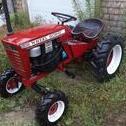
Project "Snow Drift"
By
Oldskool, in Restorations, Modifications, & Customizations
-
Similar Content
-
 By Oldskool
By Oldskool
Let's see your view from your workplace "window". I know some are driving truck,or tractor, work in shops/offices or outdoors. What is it that surrounds you during your work day?
-
 By Oldskool
By Oldskool
I've had some stuff laying around for a while now. I've had some ideas kicking around my head for a while as well.
Well they met each other a few days ago.
This is going to be a camp buggy of sorts.
Like any of my other builds I would appreciate any input anyone want to donate.
The base is an 1982-88 Yamaha G1 golf cart.
-

-
 By Oldskool
By Oldskool
I started a thread a little while back "Something from Nothing". It has been upgraded to this thread because now I'm building something from something lol. I started with a new frame and strengthened the transaxle mount a bit.
-
